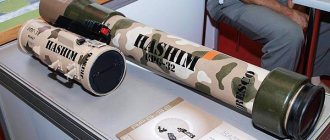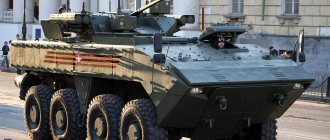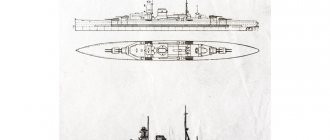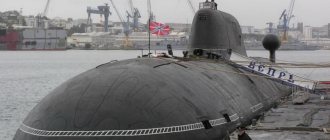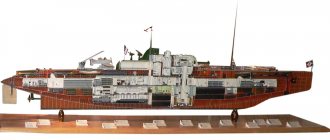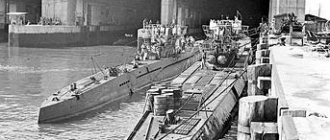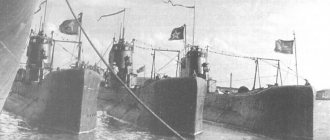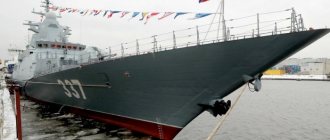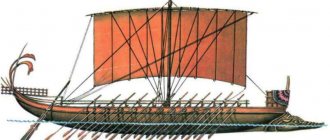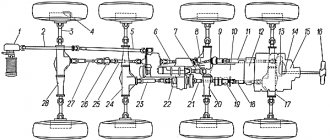History of the Stirling engine
Initially, the installation was developed to replace a machine powered by steam. Boilers of steam mechanisms exploded when the pressure exceeded permissible standards. From this point of view, Stirling is much safer; it operates using temperature differences.
The principle of operation of the Stirling engine is to alternately supply or extract heat from the substance on which work is being done. The substance itself is enclosed in a closed volume. The role of the working substance is performed by gases or liquids. There are substances that act as two components; gas is converted into liquid and vice versa. The Stirling liquid piston engine is small in size, powerful, and produces high pressure.
The decrease and increase in the volume of gas during cooling or heating, respectively, is confirmed by the law of thermodynamics, according to which all components: the degree of heating, the amount of space occupied by the substance, the force acting per unit area are related and described by the formula:
P*V=n*R*T
Here
- P is the force of gas in the engine per unit area;
- V – quantitative value occupied by gas in the engine space;
- n – molar amount of gas in the engine;
- R – gas constant;
- T – degree of gas heating in the engine K,
Stirling engine model:
Due to the unpretentiousness of the installations, engines are divided into: solid fuel, liquid fuel, solar energy, chemical reaction and other types of heating.
Anaerobic engine operating principle and device
Rating 2.9 /5 (81 votes)
A linear motor is an electrical machine whose operating principle is based on the use of the energy of a traveling magnetic field. The main advantage of such engines is the absence of kinematic chains for converting rotational motion into linear motion, which significantly simplifies the design of the driven mechanism and increases its efficiency. There is a wide variety of linear motors. Currently, more interest is shown in asynchronous linear motors as they are relatively simple in design.
These motors can be imagined as a conventional asynchronous rotary motion machine cut along a generatrix and turned into a plane. The stator of an asynchronous motor turned into a plane is the primary element, and the rotor turned out is the secondary element of a linear motor (Fig. 1).
The steel core of the primary element is laminated, and a multiphase (usually three-phase) winding is placed in its slots. The secondary element is made with a short-circuited winding placed in the grooves of the steel core, or is a solid conductive plate. The plate is made of copper, aluminum or ferromagnetic steel. When the winding of the primary element is connected to a multiphase network, a magnetic field is formed, which moves along the magnetic circuit at a speed
where τ is the pole division;
f1 is the frequency of the supply voltage.
When moving, the magnetic field induces an emf in the secondary element of the machine. This EMF causes currents, the interaction of which with the magnetic field produces a mechanical force (traction force) that tends to move the elements relative to each other.
In a linear motor, depending on its design and purpose, relative movement of both the primary and secondary elements is possible. As in a conventional asynchronous motor, the movement of the element occurs with some sliding relative to the field
S = ( v 1 - v ) / v 1
where v is the speed of movement of the element.
The rated slip of a linear motor is 2-6%.
The operation of a linear motor is significantly influenced by edge effects that arise due to the finite dimensions of the open magnetic circuits of the elements. This results in deterioration in characteristics such as tractive effort, power factor and efficiency.
Linear motors can be successfully used on belt and trolley conveyors, in drives of escalators and moving sidewalks, in metal-cutting and weaving machines, where the working parts perform reciprocating motion. The use of linear motors for transport has great prospects. The main advantage of a linear motor in this case is
possibility of obtaining high speeds up to 400-500 km/h.
An ideal engine - is there such a thing in principle?
Steam or internal combustion engines - both types use thermal energy, due to which the gas expands and then cools. The dependence of the temperature difference determines the efficiency of the engine design. The theory of operation of an ideal engine is supported by the science of thermodynamics and a theoretical model demonstrating the points:
- extensions,
- compression,
- heating,
- gas cooling in the cycle.
Before considering the design of the Stirling engine, it would be useful to consider the disadvantages of steam engines. It is clear that the steam formed from heating the water moves through the pipe into the cylinder through the open inlet valve, where it pushes the piston and drives the wheel connected to the piston.
The inlet valve then closes and the outlet valve opens. The momentum of the wheel causes the piston to return to the cylinder and push the cooled steam through the smoke (steam) pipe.
Steam system diagram: 1 – valve stem; 2 – side valve; 3 – high pressure steam inlet; 4 – steam output; 5 – cross head; 6 – crosshead guide; 7 – piston rod; 8 – piston; 9 - cylinder
The design of a steam engine is far from ideal. In any case, there are four obvious disadvantages.
- The boiler produces high pressure steam, so there is always a risk of explosion.
- The boiler is structurally located at some distance from the cylinder, so energy losses are obvious.
- The exhaust steam released also contributes to energy losses.
- A steam engine consumes huge amounts of water and fuel.
Stirling engine design
The shortcomings noted above, however, can be eliminated. For example, get rid of the boiler (eliminating the risk of explosion), and also use the heat of the fire to directly power the engine. Then, instead of using steam to move the thermal energy, you can use regular air (or another gas) to move the thermal energy.
If you put this gas component inside a closed pipe, and organize it to move back and forth again and again. This way you can get energy by eliminating the factor of constant water supply.
Finally, it makes sense to add a heat exchanger to the design to capture the energy of the hot gas inside the machine and then reuse it to improve overall efficiency. These are the main ways in which the Stirling engine stands out as a significant upgrade to steam design.
There are regenerative closed-cycle Stirling heat engines that generally follow the concept described above. Regenerative design refers to the use of heat exchangers to retain some of the heat that is otherwise lost in each cycle.
Flaws
The disadvantages of the Stirling engine include:
- It is difficult to establish mass production, since the design of the engine requires the use of a large amount of materials;
- High weight and large dimensions of the engine, since for effective cooling it is necessary to use a large radiator;
- To increase efficiency, the engine is boosted, using complex substances (hydrogen, helium) as a working fluid, which makes the operation of the unit dangerous;
- The high-temperature resistance of steel alloys and their thermal conductivity complicates the engine manufacturing process. Significant heat losses in the heat exchanger reduce the efficiency of the unit, and the use of specific materials makes the manufacture of the engine expensive;
- To adjust and switch the engine from mode to mode, special control devices must be used.
Advantages
The Stirling engine has the following advantages:
- For the engine to operate, a temperature difference is necessary; what fuel causes the heating is not important;
- There is no need to use attachments and auxiliary equipment, the engine design is simple and reliable;
- The engine life, due to its design features, is 100,000 hours of operation;
- Engine operation does not create extraneous noise, since there is no detonation;
- The engine operation process is not accompanied by the emission of waste substances;
- Engine operation is accompanied by minimal vibration;
- The processes in the installation’s cylinders are environmentally friendly. Using the right heat source will keep your engine clean.
Purpose of the air intake and features of the air supply system to the engine
The operating principle of an internal combustion engine is to convert the thermal energy of burned fuel into mechanical energy. To do this, a combustible mixture consisting of fuel and air enters the combustion chamber and is then ignited. The optimal ratio of components ensures maximum dynamic performance. The corresponding power system is responsible for the intake and intake of air into the engine cylinders.
Basic supercharging systems
Regardless of the design, air enters the engine from the atmosphere. This is true for both gasoline and diesel modifications. In general, the scheme includes:
- air intake;
- filter;
- inlet pipe;
- turbocharger;
- throttle valve (for gasoline engines);
- intermediate radiator;
- intake manifold.
Diesel engines are equipped with a turbocharger (turbine), but those running on gasoline are also equipped with forced charging. Supercharging allows the power unit to develop higher power by generating more pressure.
Air supply system on gasoline engines
The design of air supply systems for motors of any model does not have any fundamental differences. The first element is the air intake, the engine component that is responsible for communicating with the atmosphere. It is installed under the hood so as to effectively take in air masses at all speeds. The air intake socket is secured by the head optics housing on the right or left side of the car, near the radiator grille.
After entering the intake, the flow moves into the filter. This is an essential component of the engine air system, responsible for cleaning the flow from dust. If the smallest particles from the atmosphere freely enter the internal combustion engine, intensive wear of the cylinder walls will begin, which will lead to engine failure. The incoming air purification filter includes a filter element and a housing. It is installed in the engine compartment near the air intake and attached to the car body via rubber dampers.
After passing the filter, the air flow enters the inlet pipe. This is a connecting pipe designed to distance system elements. A “trap” for water is made at the bottom of the pipe. This is a small depression into which liquid that enters the air supply device flows after overcoming deep puddles.
